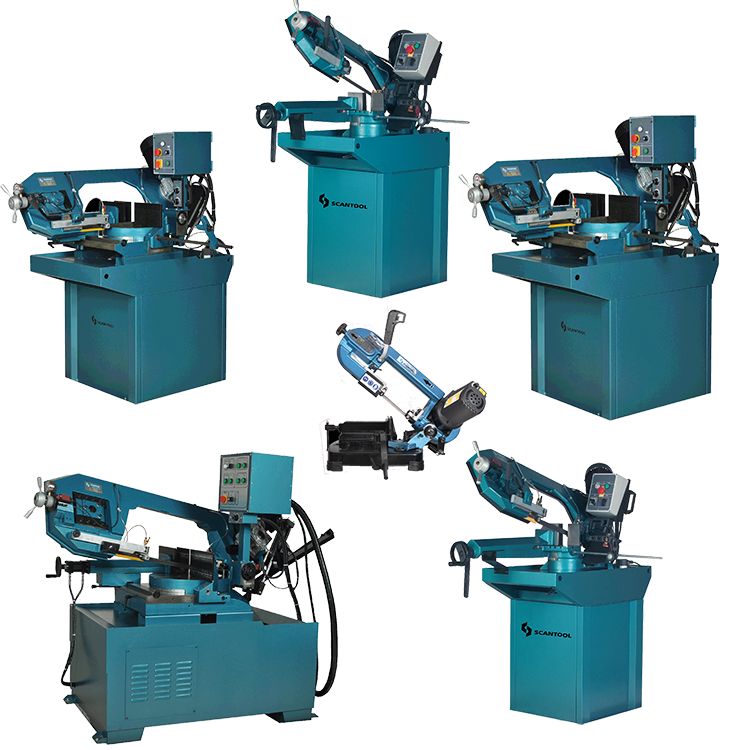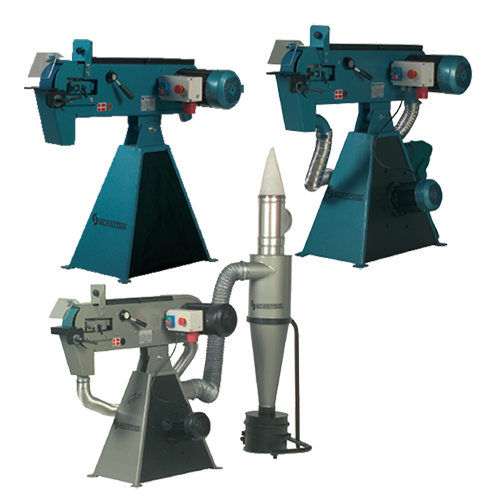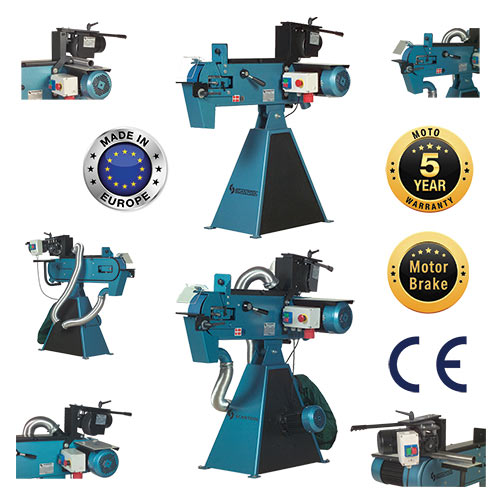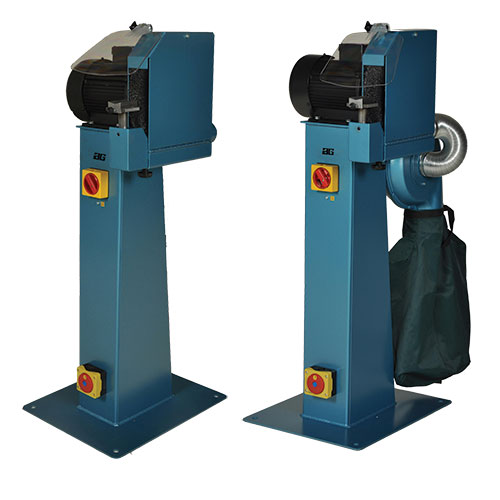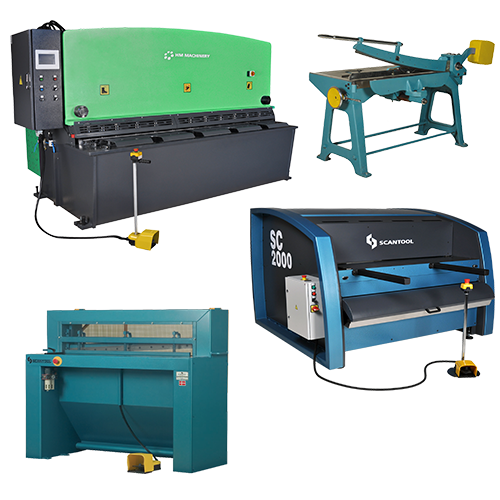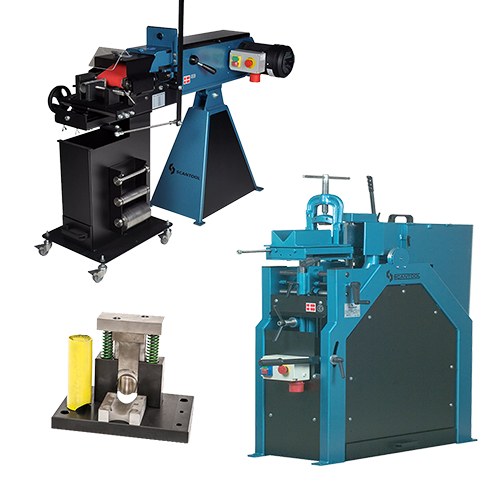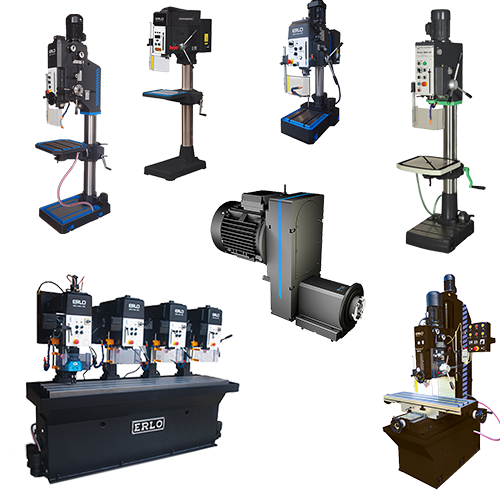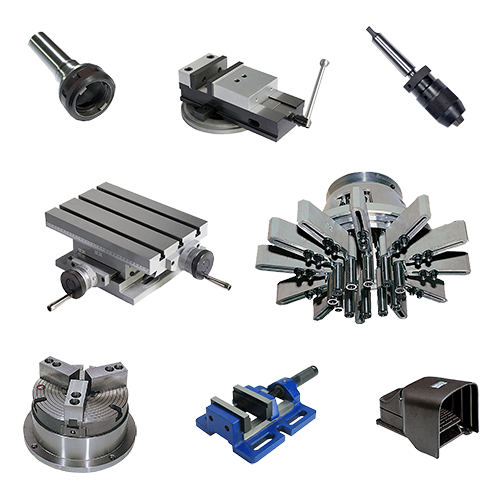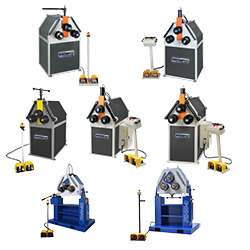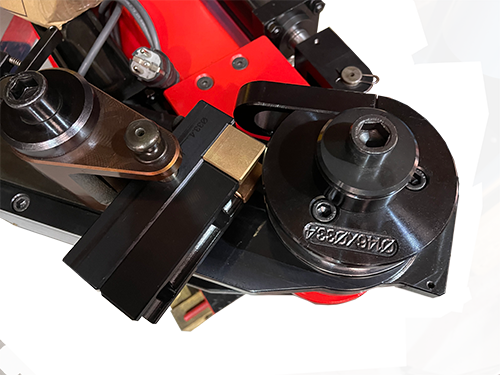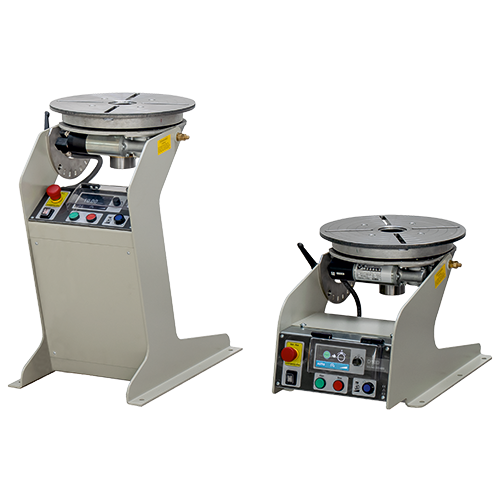Are you looking to purchase a tube (pipe) notching machine and not sure where to start? At Workshop Press, we are leading UK suppliers of metal working machinery. We offer a wide range of equipment from hydraulic press machines to tube notching machines. To help you to in the buying process we have put together the basics of tube notching machines.
Basics Of Tube Notching
What Is Pipe Notching?
Tube Notching is also known as Pipe Notching, End Notching, Coping, Codmouthing, Fishmouthing, Half Mooning and Radiusing. They are some of the common names people use to describe the process of taking an arc or a notch out of the end of a tube or pipe.
The notching process allows for one pipe to be mated up to the side of another pipe. It creates a T-junction with two tubes at a 90-degree angle (perpendicular) or a chosen angle. For example, 45 degrees or 60 degrees.
How Does Tube Notching Work?
The tube notch can be the same diameter as the tube itself, allowing two tubes of the same size to concisely mated up to each other. Or, the aperture can be larger than the tube, allowing for the joining of a smaller tube to a larger tube.
Rarely are notches put into the end of a tube where the diameter of the notch is smaller than the tube diameter being notched. Still, there are certain instances where there is a need for such a scenario. For instance, when joining two pipes made from an exquisite material such as stainless or titanium. But, this mainly comes down to the welding operator’s preferences. Pipe notching is primarily done in the centre of the tube or pipe, but there are certain occasions also where offset notches are required too.
Offset notching requires a vice mechanism that can move vertically about the cutting device.
Tube notching is commonly in use for manufacturing processes associated with:
- Handrails
- Motorbike frames
- Bike frames
- Roll Cages
- Tube Art
- Street Furniture
- Playground Equipment
- Safety Bollards
- Security Fences
- Fencing
- Kit Aeroplanes
Types Of Machines
There are a wide variety of tube notching and pipe machines:
Manual
A manual metal grinder, a cold saw, or a band saw are in use to cut out a “V-Shape” into the end of the tube. One advantage is that very little investment is needed. But accuracy, quality of the notch, and then the quality of the joints are compromised.
Manual Punch Type
A manual punch tube notching machine will have a half-moon punching and die system. It removes a semi-circle from one side of the tube at a time. This process typically requires the operator to rotate the tube 180 degrees after completing the first notch.
Accuracy can be a problem with these machines because the process relies on the operator’s ability to turn the tube 180 degrees accurately. The main driving force is a lever that is pulled upon by the operator. Mitre notching is not a possibility with these machines.
Related: How A Quality Metal Punching Machine Can Help You
Press Punch Type
This process is the same as a manual punch process, except the driving force will be a motor or a hydraulic pumping system.
Reciprocating Punch Machine Type
This is also a punching process with the punching mechanism perpetually moving up and down. An electric motor drives the reciprocating movement. There is typically a range of 3 to 5 notching tools within one unit. This process is also highly dependant on the operator being able to rotate the tube 180 degrees.
Endmill Type
These tube notches have a roughing endmill attached to a rotating shaft, which is driven by an electric motor. When the shaft is rotating, it is then, through a cranking mechanism, moved into the material or through the material in an eccentric path. Some machines accommodate mitre notching, and some only do straight on 90-degree notches.
Holesaw Type
This process implements a drilling machine of one type or another. A hand drill or a pillar drill can is used to turn and drive the hole saw. The operator secures the tube or pipe in either a separate or integrated clamping system. The size of the hole saw dictates the size of the notch. Accuracy and hole saw life are a significant consideration. But, these processes great for either onsite notching or occasional notching in a fabrication facility.
Vertical Mills
A vertical milling machine is equipped with a roughing endmill. The mill operator secures the clamping mechanism to the table of the mill. After that, the horizontal movement of the bed is used to move the tube into the endmill, creating a codmouth. This process can be complicated with long tubes but can be efficient with shorter tubes and a CNC Vertical Mill.
Features To Consider When Purchasing A Tube Notcher
Run Quantity Typically Required
Will you need to notch 100 or more tube ends a day or merely a couple of tube ends each day? Time is money in every business. So if it is a daily scenario where you will be notching 100 or more tubes, investing in a production type machine may well make good economic sense. However, if you are only doing a few each day, a manual option may be for you and your pocketbook.
Materials Typically Used
The material typically used is a consideration when looking at the tube notching process from a consumable perspective. The frequency at which you will need to change out your sanding belt, punch, or end mill needs consideration. Although there aren’t hard statistics on how many notches each consumable will last, there are general guidelines and user experiences that can be shared.
Is Mitre Notching Required?
Mitre tube notching is when the notch is at and angle that creates anything but T-Junction. If you require mitre pipe notching, then you will need to have a vice clamping mechanism that can pivot. The locking mechanism of the vice is also a consideration as you need the vise to remain rigid at all times during the tube notching operation.
Is Offset Notching Required?
This process is very similar to mitre tube notching. But, the notch is above the centre of the tube. If you require offset notching, then you will need to have a vice clamping mechanism that can be raised or moved beyond the horizontal middle of the toll being used to make the notch.
As with mitre tube notching, when offset notching, the locking mechanism of the vice is also a consideration. This is because, you need the vice to remain rigid at all times during the tube notching operation.
Safety Concerns
Each type of pipe notching machine presents a variety of different safety considerations. Such as, guarding, hand protection, eye protection, respiratory protection, and extraction.
Belt type notchers are fast but can be loud and dusty. End mill type and punching type processes present safety challenges from a hand and finger perspective, and they also create dust and swarf.
Extraction Requirements
When using grinding type operations, you may be required to attach an extraction unit to the machine as well as provide a respirator to the operator.
Will onsite notching be required? – if you and your staff will be working onsite, the size and the portability of the machine or device will be a significant consideration.
Space Limitations
When limited for space, once again, the size of the pipe notching machine will be a consideration. Different tube notching machinery has a variety of different footprint sizes.
Production style machines tend to have larger, more robust components and mechanisms. Therefore, making the machine overall a larger and heavier machine than smaller manual type devices. On the other hand, hole-saw and manual punch machines will have smaller overall structures enabling portability.
How Long Will The Machine Last
Each tube notching process requires different tools. Such as punches, dies, rollers, grinding belts, end mills, and hole saws. As previously stated, how long each tool will last depends on the type of material. As well as, the type tool, the quality of the tool, and the operator’s touch.
- Grinding tube notchers are quick and efficient. But, the belts will not last as long as a punch or a roughing end mill.
- Hole saws are great for short-run notching. But, they will only last a few notches, especially when working with stainless, titanium, or Chromoly.
- End mills will last hundreds or potentially thousands of cuts. However, they are expensive in comparison to the other cutting tools listed. Also, the machinery the endmills are mounted on, is typically many times more costly than the alternatives listed.
Get In Touch Today – Workshop Press
Are you looking to purchase a pipe notching machine? Do you need assistance in deciding which machine is right for you? Get in touch today. As leading suppliers of metal working machinery, we can assist you with any questions you have.
Furthermore, if you found this blog useful, you may wish to read another one: Improve Your Production Process With A Workshop Hydraulic Press


